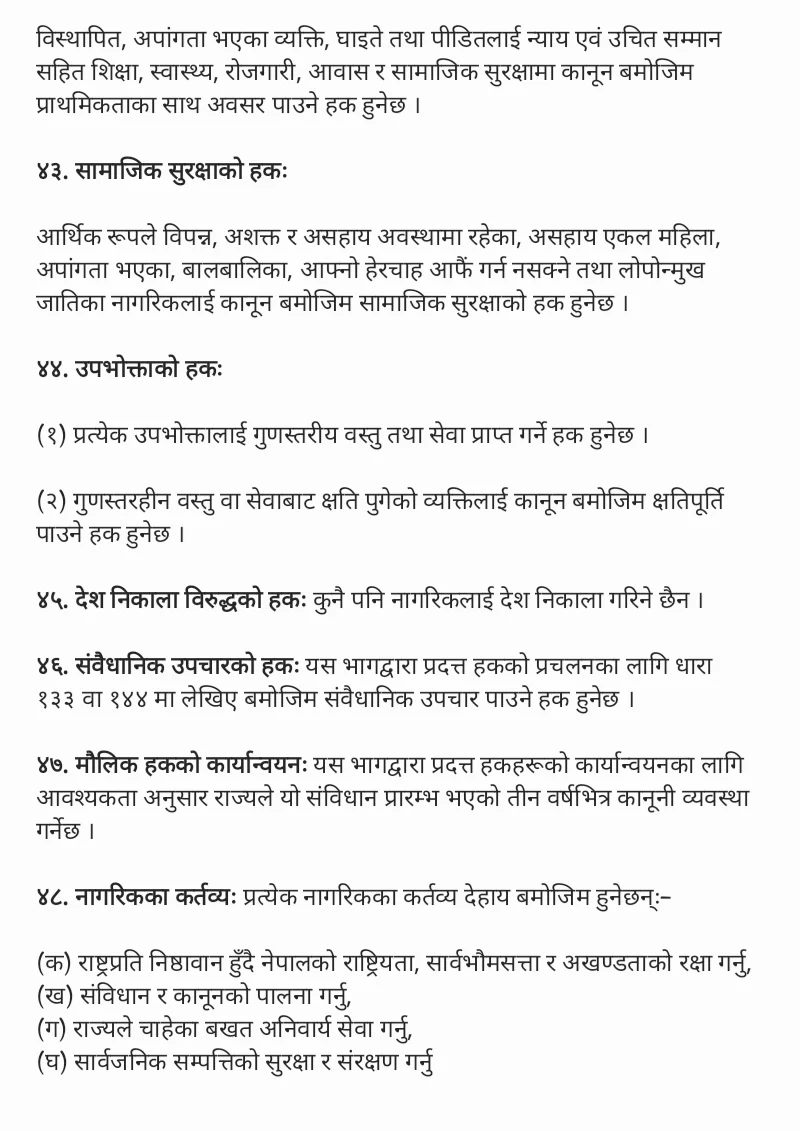Current Constitution of Nepal
The Constitution of Nepal has 35 parts, 308 articles, and 9 schedules. It establishes Nepal as a federal democratic republic, divided into 7 provinces
The current Constitution of Nepal was adopted on September 20, 2015. It replaced the Interim Constitution of Nepal that was in place since the end of the Nepalese Civil War in 2007.
The Constitution of Nepal has 35 parts, 308 articles, and 9 schedules. It establishes Nepal as a federal democratic republic, divided into 7 provinces, each with its own provincial government. The Constitution also defines the rights and duties of Nepali citizens, as well as the powers and responsibilities of the federal government and the provincial governments.
Some of the key features of the Constitution of Nepal include:
- The establishment of a bicameral federal parliament consisting of the House of Representatives and the National Assembly.
- The creation of a President as the head of state, and a Prime Minister as the head of government.
- The recognition of Nepal as a secular state, with the freedom of religion guaranteed to all citizens.
- The recognition of fundamental rights, such as the right to equality, freedom of speech, and the right to privacy.
- The inclusion of provisions for affirmative action for women, Dalits, indigenous people, Madhesis, Tharus, and other marginalized groups.
- The establishment of an independent judiciary and a constitutional court to interpret and enforce the Constitution.
Overall, the Constitution of Nepal represents a significant step forward in Nepal's democratic transition, and provides a framework for ensuring greater political stability, social inclusion, and economic development in the country.












































Join the conversation